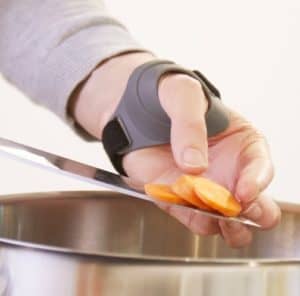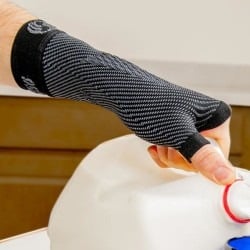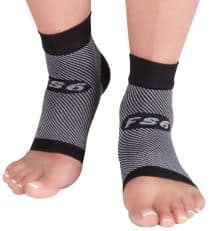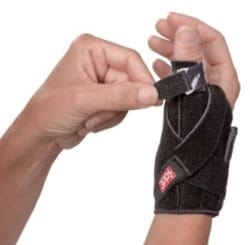Splints and braces help to support and protect your injured bones, joints, ligaments and other parts of your body. While they are most commonly recommended to help heal broken bones and relieve pain and swelling from arthritis and other health conditions, there are several misconceptions about the use of splints that lead to the question- will wearing a splint or brace really help? Learn about the 3 common myths about wearing a brace to treat thumb arthritis, Carpal Tunnel Syndrome, Trigger Finger, EDS and more.
3 Common Myths about Wearing a Splint or Brace
#1 – A splint or brace is not going to help me
There are questions as to whether a splint or brace will help relieve pain and promote healing of certain health conditions or injuries. Research suggests that a splint/brace can help. Here are a few of the findings:
- A study on wearing a finger splint to treat trigger finger found that 87% of participants with mild trigger finger did not require surgery or a steroid injection one year after wearing a splint
- A study on wearing a brace for carpal tunnel, while sleeping, found that wearing a splint was 67% successful at a 12-month follow-up
These studies suggest that splints may be very helpful for decreasing pain and improving movement for symptoms that are related to an injury or condition.
| Learn how to treat your finger condition with an Oval-8 Finger Splint- Download our ebook |
#2 – Using a splint or brace will make me weaker and make my joints stiff
Most splints and braces for arthritis or mild injuries allow some motion and do not have the same effect as wearing a cast. They are designed to be worn for certain activities or long enough to help relieve symptoms. The fact is, that while an injury or disease may lead to a loss of range of motion or strength, the use of a splint or brace won’t cause a permanent change. Again there is research to support this:
- Research on using a brace for the treatment of rheumatoid arthritis found no decrease in range of motion even when it was worn on a regular basis
- A study on wearing a brace for thumb arthritis, found no decrease in grip strength, pinch strength, or dexterity even after it was worn for 180 days.
Given that a brace can prevent you from favoring one hand or foot over the other, it may actually lead to better strength and improved motion.
#3 Surgery will be better treatment than using a splint or brace
People often feel that surgery may be a preferred method of treatment for an injury and that they shouldn’t “waste” time trying a brace. While for some injuries or conditions, surgery may be the best or only option, there are injuries where bracing is the first, and sometimes only, recommendation of healthcare professionals.
For example, Ehlers Danlos syndrome, a condition characterized by hypermobility of the joints is treated primarily with the use of splints and braces. In addition, general consensus among healthcare professionals suggests that simple mallet finger injuries (“Baseball Finger”) should be treated by wearing a finger splint as opposed to surgery.
Advice on Choosing A Splint or Brace
Splints and braces are medical devices and it is best to choose one recommended and fit by a health care professional. When choosing one for yourself, consider the options carefully and know that there is not always just one “right” choice. It is also important to remember that once chosen, your splint or brace may need to be worn for several days or even weeks to relieve painful symptoms and restore motion.
Like what you’ve read? Click here to subscribe to the blog!
More Information on Splints and Braces
Click on the images below



View Video
Which Thumb Brace is Right For You
Our blogs are educational in nature and are not intended as a substitute for medical advice. Because your condition is unique to you, it is recommended that you consult with your health care provider before attempting any medical or therapeutic treatments. We are always happy to answer questions about products mentioned in our blogs, however, we cannot provide a diagnosis or medical advice.


Thanks for the interesting article about a splint or a brace. It’s good to know that wearing a finger splint help treat trigger finger for about 87% of the participants. I’m kind of interested to learn if it worked no matter how severe the trigger finger was or if it had different effects.
Thanks for helping me understand that there should be many options to choose from since each one is different for each patient. I will share this information with my best friend since he is the one who will be needing this. It is because he fell badly after dunking the ball on the ring yesterday during a league.